
Improving Your Health and Your Life
Ageing and Preserving Bone and Muscle Strength
Premature Ageing - The Conscientious Minority
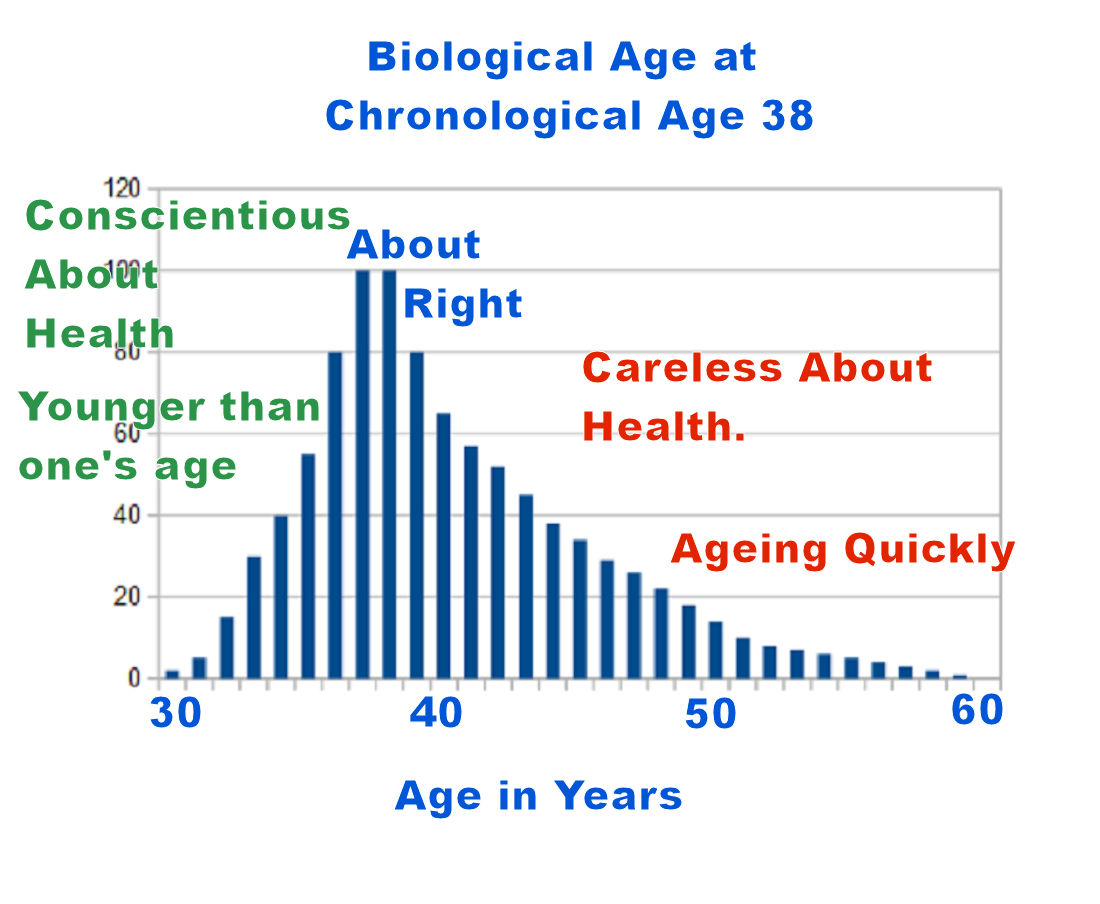


This graph is based on the Dunedin Study, where at age 38 most people had begun to show that they were ageing too quickly. That's confirmed by the NHANES graph about the Age Specific Prevalence of Metabolic Syndrome. After the age of 40 the rate of metabolic disorder increases a lot.
So why is it that homeostasis, that is supposed to keep us healthy, breaks down? Unless we are particularly health focused, conscientious about our health, we all tend to age more rapidly than we need to. Notice the distinction between those who are conscientious about their health and those who are careless.
That's something you can influence in your own life, if you choose. The difference is about 10 or 14 years longer life according to many experts. Perhaps even more importantly, we are talking about a high quality of life, with very good strength and mobility and free of pain.
It's sad to hear people say, "I can see that now, but it's too late for me." You can't know that. ![]() Dr John Madney explains in this video, how two of his patients, both expected to die soon, have changed their diet, got out of the death bed and returned to the community. You never know.
Dr John Madney explains in this video, how two of his patients, both expected to die soon, have changed their diet, got out of the death bed and returned to the community. You never know.
People notice that they have become metabolically unhealthy 20 years after the damage began. Then they decide it's too late, they think that trying to change things is useless. Not so, six weeks can change your life.
The Key to Longevity with Dr. Gabrielle Lyon
Dr. Morgan Nolte with Dr. Gabrielle Lyon (48 minutes)
Published by: Dr. Morgan Nolte - 29 Sept 2021
A faulty diet will make you insulin resistant, fat and weak. Your brain mass will decline.
Lack of exercise will reduce your muscle mass and your ability to cope with a future accidents or infections.
Older people need to eat the best quality protein they can get, and at least twice as much as commonly recommended.
Note: Open Future Health strongly recommends this podcast. Please watch all. Then probably watch it again taking notes. So much valuable information here.

Bone health and muscle health depend on both nutrition and on the work load of your muscles and bones. Bones are living tissue, and they respond to the strain that muscles generate carrying loads. Nutrition makes proteins, vitamins and minerals available to build the body. The work you do makes both muscles and bones strong.

You can restore lost strength.

Every day do something that's physically demanding. Running, skipping, climb stairs, walk uphill, lift weights, and do it HARD for 30 seconds.
Can you run? Can you run on the spot for 10 seconds? Can you skip even without the rope for 10 seconds? Can you SPRINT for 10 seconds? The speed is important. Then try 3x10 seconds. And later 30 seconds without stopping.

5km park runs are good, but short runs, sprints for 30 seconds are also important.
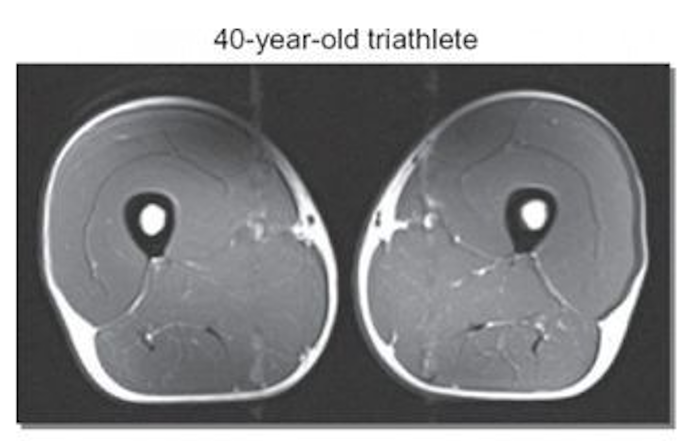
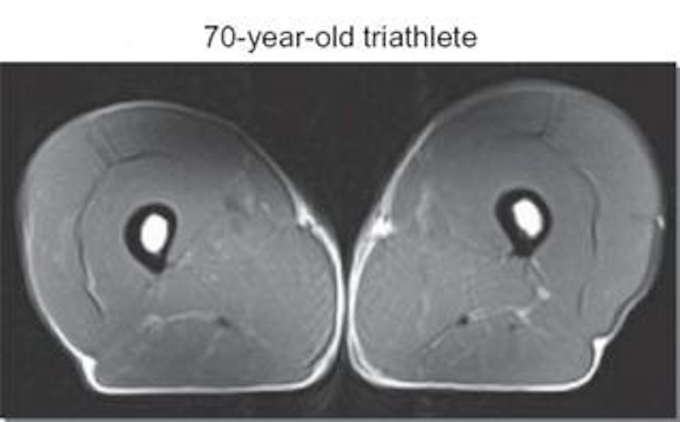
These photographs show that it's possible for muscle mass to be retained. The performance of older athletes does decline, but the very fit 70 year old man, has a physical capacity of the average person who is half that age.
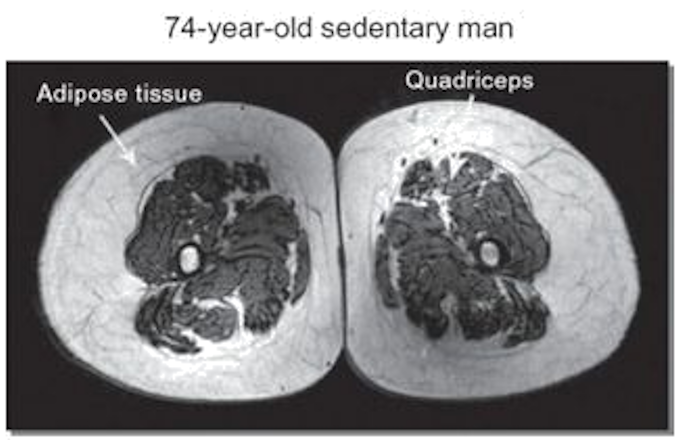
Weight is not a good measure of your body composition. These legs have lost both bone mass and muscle mass.
>Muscle Loss (Sarcopenia) begins early in life. You need a plan to retain strength in both your muscles and bones.
Muscle Loss and Aging - Video
https://youtu.be/ymcFS1tQrsk
Dr. Nathan LeBrasseur discusses muscle loss during the aging process and also looks at strategies and therapies to maintain muscle health.
95-year-old Sprinter Charles Eugster
https://youtu.be/4LDfx958Qgc
Meet 95-year-old Englishman Charles Eugster. Track and field world record holder and bodybuilding champion. Was he the fittest old age pensioner in the world?
Charles Eugster, 97-Year-Old Athlete
https://youtu.be/_CjzX-U53lU
Charles Eugster feels society has put an expiry date on the elderly, and sees being old as an inexorable path to inactivity and physical decline. But it doesn't need to be that way
Click to Image to read the Abstract Metabolic Syndrome is strongly linked to Osteoarthritis.
Metabolic Syndrome-Associated Osteoarthritis PubMed.Govt
Click to Image to read the Abstract Low-carbohydrate diets reduce knee pain.
The Effect of Low-Carbohydrate and Low-Fat Diets on Pain in Individuals With Knee Osteoarthritis - Link to PubMed.Govt
A self (N=1) experiment with a diet free of vegetables is almost cost less. If pain is a problem, it's worth the effort. Many people report success.
Link to Dr Shawn Baker's Online Poll and Results
Among people in their 70's, knee and hip replacements are almost routine. This need not be so.

Park Run is world-wide. Hagley Park Christchurch, NZ. December 2019, 300+ runners.

Regular exercise will help you keep your resting heart rate low.
Click to Table to Enlarge
You need a stable kitchen chair, placed against a wall. Cross your arms hands on opposite shoulders.
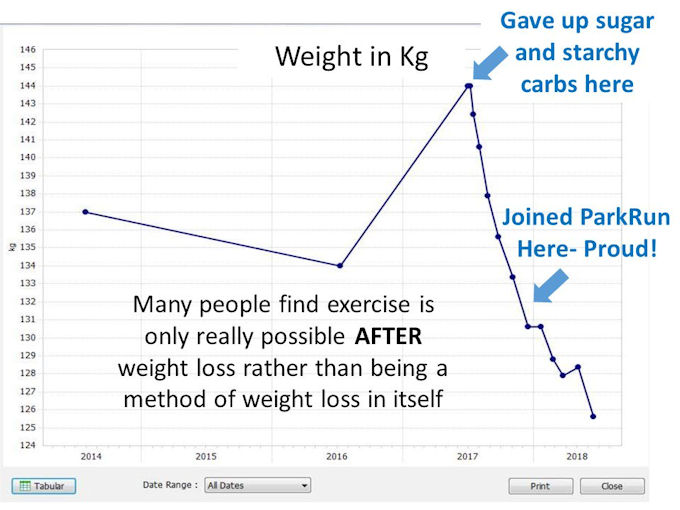
Weight Loss First - Then Begin to Exercise

Why the majority is always wrong
TEDx - Paul Rulkens
https://youtu.be/VNGFep6rncY
His work is based on his knowledge and experience about the practical application of behavioral psychology, neuroscience and especially common sense.
Further reading
![]() What is the Best Dietary Pattern for Humans? (Includes OFH Video Three)
What is the Best Dietary Pattern for Humans? (Includes OFH Video Three)
![]() What Causes Type II Diabetes? Obesity?
What Causes Type II Diabetes? Obesity?
![]() Understanding Private and Professional Dissonance
Understanding Private and Professional Dissonance
![]() The Search for Evidence Based Medicine.
The Search for Evidence Based Medicine.
![]() Forbidden Conversations - Family Silence - My Health is My Business Includes OFH Video Two
Forbidden Conversations - Family Silence - My Health is My Business Includes OFH Video Two
![]() Lifestyle Changes. Nutrition First, then Exercise.
Lifestyle Changes. Nutrition First, then Exercise.
![]() Better Nutrition to improve your health
Better Nutrition to improve your health
![]() Metabolism, Insulin Resistance and Mental Health
Metabolism, Insulin Resistance and Mental Health